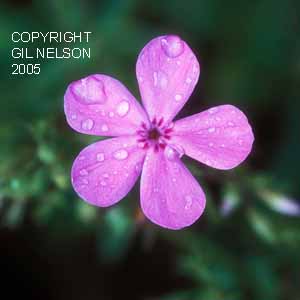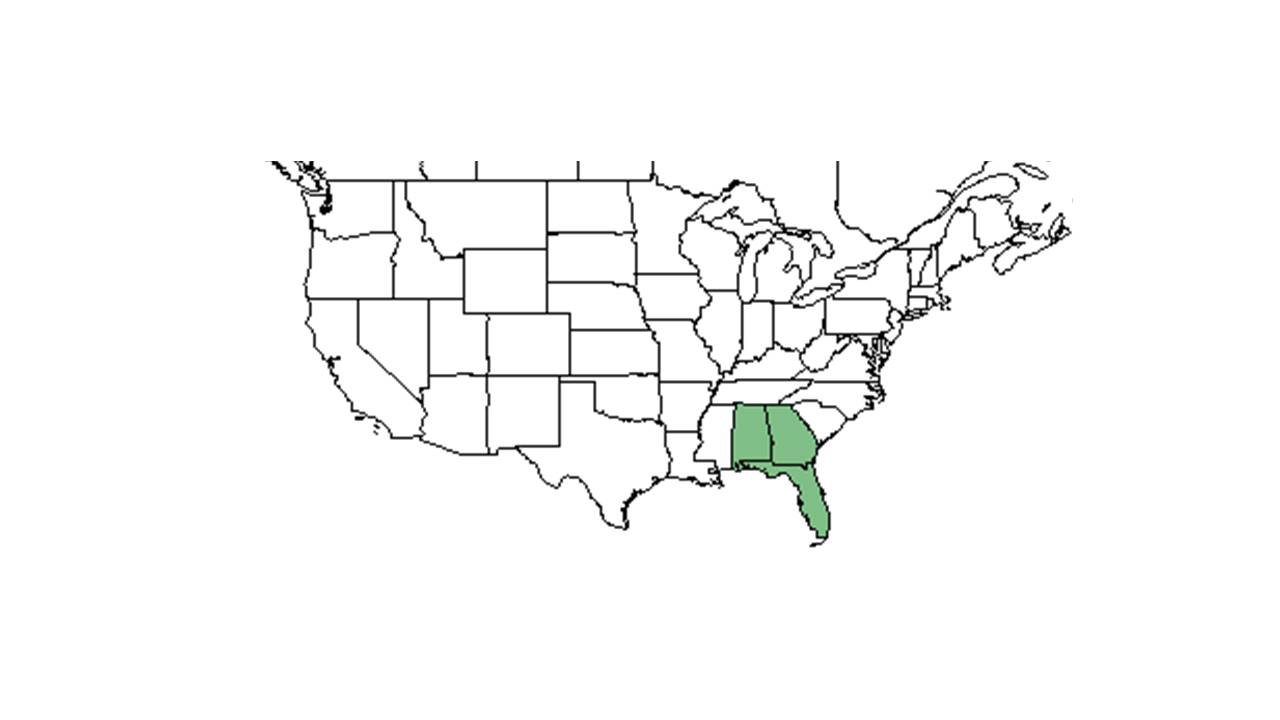Difference between revisions of "Phlox floridana"
| (42 intermediate revisions by 12 users not shown) | |||
| Line 15: | Line 15: | ||
| binomial_authority = Benth. | | binomial_authority = Benth. | ||
| range_map = PHLO_FLOR_dist.jpg | | range_map = PHLO_FLOR_dist.jpg | ||
| − | | range_map_caption = Natural range of ''Phlox floridana'' from USDA NRCS [http:// | + | | range_map_caption = Natural range of ''Phlox floridana'' from USDA NRCS [http://plants.usda.gov/core/profile?symbol=PHFL5 Plants Database]. |
}} | }} | ||
| + | Common name: Florida phlox | ||
| + | ==Taxonomic notes== | ||
| + | Synonyms: none<ref name=weakley>Weakley, A.S. 2020. Flora of the Southeastern United States. Edition of 20 October 2020. University of North Carolina at Chapel Hill, Chapel Hill, North Carolina.</ref> | ||
| + | |||
| + | Varieties: none<ref name=weakley/> | ||
| + | |||
==Description== | ==Description== | ||
<!-- Basic life history facts such as annual/perrenial, monoecious/dioecious, root morphology, seed type, etc. --> | <!-- Basic life history facts such as annual/perrenial, monoecious/dioecious, root morphology, seed type, etc. --> | ||
| + | |||
==Distribution== | ==Distribution== | ||
==Ecology== | ==Ecology== | ||
===Habitat=== <!--Natural communities, human disturbed habitats, topography, hydrology, soils, light, fire regime requirements for removal of competition, etc.--> | ===Habitat=== <!--Natural communities, human disturbed habitats, topography, hydrology, soils, light, fire regime requirements for removal of competition, etc.--> | ||
| + | ''P. floridana'' has been documented to occur on a sandy ridge in a longleaf pine/scrub-oak woodland; pine/hardwood forest; open piney areas; sandy soil of open pine flatwoods; amongst grasses in a burned longleaf pine forest; along the edge of pine-oak-hickory woods; semi-boggy slope of longleaf pine savanna; and an annually burned pine savanna. It has been observed to grow on sandy roadsides, picnic areas, dry sand and gravel in an old field, cut and burned over pine flatwoods, and along a powerline corridor.<ref name=fsu> Florida State University Robert K. Godfrey Herbarium database. URL: http://herbarium.bio.fsu.edu. Last accessed: July 2015. Collectors: Robert K. Godfrey, K. Craddock Burks, Loran C. Anderson, Michael Cartrett, Robert Doren, Robert Kral, Sidney McDaniel, C. Jackson, Andre F. Clewell, S. W. Leonard, W. W. Baker, Cecil R Slaughter, R.A. Norris, R. Komarek. States and Counties: Florida: Bay, Calhoun, Clay, Franklin, Gadsden, Gulf, Holmes, Jackson, Jefferson, Leon, Liberty, Okaloosa, Taylor, Wakulla, Walton. Georgia: Grady, Thomas. Compiled by Tall Timbers Research Station and Land Conservancy. </ref> Soils observed include sand, dry sandy loam, drying loamy sand, and in shaded loose loamy sand.<ref name=fsu/> Associated species include ''Pinus palustris, Tetragonotheca, Onosmodium, Pediomelum, Quercus laurifolia, Quercus margarettae, Quercus incana, Quercus laevis, Vaccinium arboreum, Vaccinium stamineum, Opuntia humifusa and Asclepias''.<ref name=fsu/> | ||
| + | |||
| + | ''Phlox floridana'' is an indicator species for the Clayhill Longleaf Woodlands community type as described in Carr et al. (2010).<ref>Carr, S.C., K.M. Robertson, and R.K. Peet. 2010. A vegetation classification of fire-dependent pinelands of Florida. Castanea 75:153-189.</ref> | ||
| + | |||
===Phenology=== <!--Timing off flowering, fruiting, seed dispersal, and environmental triggers. Cite PanFlora website if appropriate: http://www.gilnelson.com/PanFlora/ --> | ===Phenology=== <!--Timing off flowering, fruiting, seed dispersal, and environmental triggers. Cite PanFlora website if appropriate: http://www.gilnelson.com/PanFlora/ --> | ||
| + | ''P. floridana'' has been observed flowering April through November with peak inflorescence in May<ref name=fsu/><ref>Nelson, G. [http://www.gilnelson.com/ PanFlora]: Plant data for the eastern United States with emphasis on the Southeastern Coastal Plains, Florida, and the Florida Panhandle. www.gilnelson.com/PanFlora/ Accessed: 12 DEC 2016</ref>. It has been observed to resprout and flower within three months of being burned.<ref>Robertson, K.M. 2015. Personal observation at the Pebble Hill Fire Plots on Pebble Hill Plantation near Thomasville, Georgia.</ref> | ||
===Seed dispersal=== | ===Seed dispersal=== | ||
| − | ===Seed bank and germination=== | + | This species is thought to be dispersed by wind.<ref>Kirkman, L. Katherine. Unpublished database of seed dispersal mode of plants found in Coastal Plain longleaf pine-grasslands of the Jones Ecological Research Center, Georgia.</ref> |
| + | <!--===Seed bank and germination===--> | ||
===Fire ecology=== <!--Fire tolerance, fire dependence, adaptive fire responses--> | ===Fire ecology=== <!--Fire tolerance, fire dependence, adaptive fire responses--> | ||
| − | + | Populations of ''Phlox floridana'' have been known to persist through repeated annual burns.<ref>Robertson, K.M. Unpublished data collected from Pebble Hill Fire Plots, Pebble Hill Plantation, Thomasville, Georgia.</ref><ref>Platt, W.J., R. Carter, G. Nelson, W. Baker, S. Hermann, J. Kane, L. Anderson, M. Smith, K. Robertson. 2021. Unpublished species list of Wade Tract old-growth longleaf pine savanna, Thomasville, Georgia.</ref> It flowers within two months of burning in early summer. [[KMR]] | |
| + | <!--===Pollination===--> | ||
| + | <!--===Herbivory and toxicology===--> <!--Common herbivores, granivory, insect hosting, poisonous chemicals, allelopathy, etc--> | ||
| + | <!--===Diseases and parasites===--> | ||
| + | |||
| + | ==Conservation, cultivation, and restoration== | ||
| + | |||
| + | ==Cultural use== | ||
| + | ==Photo Gallery== | ||
| + | <gallery widths=180px> | ||
| + | </gallery> | ||
| − | |||
| − | |||
| − | |||
| − | |||
| − | |||
==References and notes== | ==References and notes== | ||
| − | |||
Latest revision as of 14:37, 19 June 2023
| Phlox floridana | |
|---|---|

| |
| Photo taken by Gil Nelson | |
| Scientific classification | |
| Kingdom: | Plantae |
| Division: | Magnoliophyta - Flowering plants |
| Class: | Magnoliopsida – Dicotyledons |
| Order: | Solanales |
| Family: | Polemoniaceae |
| Genus: | Phlox |
| Species: | P. floridana |
| Binomial name | |
| Phlox floridana Benth. | |

| |
| Natural range of Phlox floridana from USDA NRCS Plants Database. | |
Common name: Florida phlox
Contents
Taxonomic notes
Synonyms: none[1]
Varieties: none[1]
Description
Distribution
Ecology
Habitat
P. floridana has been documented to occur on a sandy ridge in a longleaf pine/scrub-oak woodland; pine/hardwood forest; open piney areas; sandy soil of open pine flatwoods; amongst grasses in a burned longleaf pine forest; along the edge of pine-oak-hickory woods; semi-boggy slope of longleaf pine savanna; and an annually burned pine savanna. It has been observed to grow on sandy roadsides, picnic areas, dry sand and gravel in an old field, cut and burned over pine flatwoods, and along a powerline corridor.[2] Soils observed include sand, dry sandy loam, drying loamy sand, and in shaded loose loamy sand.[2] Associated species include Pinus palustris, Tetragonotheca, Onosmodium, Pediomelum, Quercus laurifolia, Quercus margarettae, Quercus incana, Quercus laevis, Vaccinium arboreum, Vaccinium stamineum, Opuntia humifusa and Asclepias.[2]
Phlox floridana is an indicator species for the Clayhill Longleaf Woodlands community type as described in Carr et al. (2010).[3]
Phenology
P. floridana has been observed flowering April through November with peak inflorescence in May[2][4]. It has been observed to resprout and flower within three months of being burned.[5]
Seed dispersal
This species is thought to be dispersed by wind.[6]
Fire ecology
Populations of Phlox floridana have been known to persist through repeated annual burns.[7][8] It flowers within two months of burning in early summer. KMR
Conservation, cultivation, and restoration
Cultural use
Photo Gallery
References and notes
- ↑ 1.0 1.1 Weakley, A.S. 2020. Flora of the Southeastern United States. Edition of 20 October 2020. University of North Carolina at Chapel Hill, Chapel Hill, North Carolina.
- ↑ 2.0 2.1 2.2 2.3 Florida State University Robert K. Godfrey Herbarium database. URL: http://herbarium.bio.fsu.edu. Last accessed: July 2015. Collectors: Robert K. Godfrey, K. Craddock Burks, Loran C. Anderson, Michael Cartrett, Robert Doren, Robert Kral, Sidney McDaniel, C. Jackson, Andre F. Clewell, S. W. Leonard, W. W. Baker, Cecil R Slaughter, R.A. Norris, R. Komarek. States and Counties: Florida: Bay, Calhoun, Clay, Franklin, Gadsden, Gulf, Holmes, Jackson, Jefferson, Leon, Liberty, Okaloosa, Taylor, Wakulla, Walton. Georgia: Grady, Thomas. Compiled by Tall Timbers Research Station and Land Conservancy.
- ↑ Carr, S.C., K.M. Robertson, and R.K. Peet. 2010. A vegetation classification of fire-dependent pinelands of Florida. Castanea 75:153-189.
- ↑ Nelson, G. PanFlora: Plant data for the eastern United States with emphasis on the Southeastern Coastal Plains, Florida, and the Florida Panhandle. www.gilnelson.com/PanFlora/ Accessed: 12 DEC 2016
- ↑ Robertson, K.M. 2015. Personal observation at the Pebble Hill Fire Plots on Pebble Hill Plantation near Thomasville, Georgia.
- ↑ Kirkman, L. Katherine. Unpublished database of seed dispersal mode of plants found in Coastal Plain longleaf pine-grasslands of the Jones Ecological Research Center, Georgia.
- ↑ Robertson, K.M. Unpublished data collected from Pebble Hill Fire Plots, Pebble Hill Plantation, Thomasville, Georgia.
- ↑ Platt, W.J., R. Carter, G. Nelson, W. Baker, S. Hermann, J. Kane, L. Anderson, M. Smith, K. Robertson. 2021. Unpublished species list of Wade Tract old-growth longleaf pine savanna, Thomasville, Georgia.